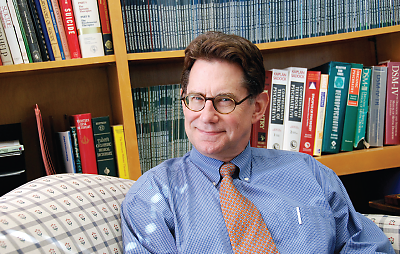Task Force Finds Evidence Insufficient to Recommend for or Against Suicide Screening in Primary Care
Abstract
Experts agree there would be much greater utility in screening for depression and anxiety in primary care rather than for suicide risk.
Evidence for the effectiveness of screening for suicide risk in primary care practices is insufficient and is not recommended, according to the United States Preventive Services Task Force (USPSTF).
The USPSTF reviewed evidence on the accuracy and reliability of instruments used to screen for increased suicide risk, benefits and harms of screening for increased suicide risk, and benefits and harms of treatments to prevent suicide. The reviewed studies used various screening tools in primary care patients aged 18 to 70.
The sensitivity and specificity of screening tools generally ranged from 52 percent to 100 percent and from 60 percent to 98 percent, respectively. The instruments showed a wide range in accuracy, but data were limited, and no instruments were examined in more than one study.
The USPSTF concluded in a report in the May 20 Annals of Internal Medicine that the “evidence is insufficient to assess the balance of benefits and harms of screening for suicide risk in adolescents, adults, and older adults in a primary care setting.”
Several clinicians with expertise in suicide issues say that the USPSTF recommendation is wise and not surprising. And all agreed on the greater utility of screening for major depression.

Jan Fawcett, M.D., says evidence doesn’t show that a primary care provider can prevent a suicide or determine which patients scoring high on a scale are “really” suicidal.
“Screening for suicide, as opposed to suicidal behaviors, has a low specificity and sensitivity rate,” said Jan Fawcett, M.D., who was chair of the DSM-5 Mood Disorder Work Group and Suicide Sub-Work Group. “What should the primary care physician do to prevent the predicted suicide? Send the patient to an emergency department? Try to admit the patient involuntarily for psychiatric care? There is no evidence that the primary care provider can prevent a suicide, much less determine which patients scoring high on the scale are `really’ suicidal. Why should the primary care physician want to accumulate high suicide screens if he or she cannot do anything about them and can be held liable for not being successful?
“Perhaps teaching primary care clinicians to evaluate, treat, and refer suicidal depression patients would be more useful than using untested check lists from patients,” Fawcett said.
Eric Caine, M.D., co-director of the Center for the Study of Prevention of Suicide at the University of Rochester Medical Center, said he believes the USPSTF recommendation makes a lot of sense. “Having a diagnosis of major depression may increase the risk for suicide 50 fold,” he told Psychiatric News. “The suicide rate is approximately 12 per 100,000 persons in the general population; it is about 600 per 100,000 persons with major depression. One would find 600 deaths of persons with major depression during the ensuing year, and 99,400 with major depression who won’t die,” Caine said.
“So, if I were seeing a person with major depression I would be correct more than 99 percent of the time saying that she or he won’t die by suicide even without evaluating the person. Screening a general population will not have utility as suicide prevention and will identify many persons ‘at risk’ who never will die [by suicide], but will be labeled as such with potential consequences.
Likelihood of Detection Extremely Low
“In a general medical setting, the likelihood of detecting a suicidal person is very, very low,” Caine said. “At the same time, I very much support assessing the burden of distress and depression in general medical patients—not for the purposes of suicide prevention but for the fact that they are burdened and very much need further evaluation and, very often, treatment.”

Yeates Conwell, M.D., says there are costs to screening for suicide risk in false negatives and false positives and points out that questions remain about the most effective way to respond to the true positives.
Yeates Conwell, M.D., director of the geriatric psychiatry program at the University of Rochester Medical Center and an expert on depression and suicide among the elderly, concurred.
“The great majority of people who take their own lives have a mental illness, and depression is most common in primary care,” Conwell said. “Most of those patients, therefore, will be picked up by regular depression screening in that setting, which this recommendation does not address and is increasingly standard practice in primary care.”
Conwell said there are individuals who are at risk but don’t have depression, and others with depression who screen positive but deny suicidal ideation. “My take is that the task force recommendations reflect shortcomings in our knowledge about how best to elicit thoughts that indicate risk, and how to interpret and optimally respond,” he said. “When are thoughts of death without intent in an older person normal, for example, and when are they signs about which we should be concerned and intervene? There are costs to screening, of course, in false negatives and false positives, and even questions that have still to be answered about what is the most effective way to respond to the true positives.”
Suicide Contagion Can Be a Risk
And David Shaffer, M.D., of Columbia University, an expert on epidemiology of adolescent suicide, said the recommendation makes sense for adolescence, a time when suicides are rare despite the fact that suicide ideation is much more common than at any other time in life.
He said the real risk factors for adolescent suicide—alcohol abuse for boys and anxiety coupled with depression for both genders—are under-identified. “They are very much worth identifying and treating, not for the relatively rare outcome of suicide within those groups, but because of their much more common impact on education and early working experience and social development,” Shaffer said. “Alcohol abuse is also important as a cause of mortality in road traffic accidents. Anxiety disorders are the diagnoses that are the least likely to have been identified by parents as a problem, with 60 percent of anxiety-disordered teenagers never having been identified, diagnosed, or treated—a situation that calls out for universal screening. The introduction of routine preventive screening for anxiety and for alcohol abuse during adolescence would require further research but would represent a major advance in preventive mental health.” ■
“Screening for Suicide Risk in Adolescents, Adults, and Older Adults in Primary Care: U.S. Preventive Services Task Force Recommendation Statement” can be accessed here.



